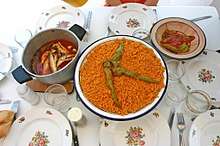Tunisian people
| توانسة (Tawānisa, dialectal Twensa) تونسيون (Tūnisiyyūn) | |
|---|---|
 | |
| Total population | |
| c. 13 million[a] | |
| Regions with significant populations | |
|
(2016 estimate)[1] | |
| 668,668[2] | |
| 189,092[2] | |
| 120,700[3] | |
| 86,601[2] | |
| 68,952[2] | |
| 24,810[2] | |
| 20,300[2] | |
| 19,361[2] | |
| 18,796[2] | |
| 16,774[2] | |
| 16,667[2] · [4] | |
| 15,308[2] | |
| 8,776[2] | |
| 8,704[2] | |
| 7,827[2] | |
| 7,797[2] | |
| 7,083[2] | |
| Languages | |
| Arabic (Tunisian Arabic, Judeo-Tunisian Arabic)[5], Berber[6][7][8][9], French | |
| Religion | |
| Mainly Islam (Sunni; also Ibadi); minority Judaism, Christianity[10] | |
| Related ethnic groups | |
| Turco-Tunisians, European Tunisians, Italian Tunisians, Maghrebis, other Afroasiatic and Romance peoples | |
|
a The total figure is merely an estimation; sum of all the referenced populations. | |
Tunisian people or Tunisians (Arabic: تونسيون Tūnisiyyūn, Tunisian Arabic: توانسة Twensa), are a Maghrebi ethnic group and nation native to Northwest Africa, primarily Tunisia, who speak Tunisian Arabic (Derja) and share a common Tunisian culture and identity. In addition, a Tunisian diaspora has been established with modern migration, particularly in Western Europe, namely France, Italy and Germany.
Prior to the modern era, Tunisians were known as Afāriqah (Roman Africans),[11] from the ancient name of Tunisia, Ifriqiya or Africa in the antiquity, which gave the present day name of the continent Africa.[12]
History
Numerous civilizations and peoples have invaded, migrated to, or have been assimilated into the population over the millennia, with influences of population from Phoenicians/Carthaginians, Romans, Vandals, Greeks, Arabs, Normans, Italians, Spaniards, Ottoman Turks/Janissaries, and French.
Africa and Ifriqiya
The first people known to history in what is now Tunisia were Berber people related to the Numidians. Phoenicians settled Tunisia during the 12th to the 2nd century BC, founded ancient Carthage.[13] The migrants brought with them their culture and language that progressively spread from Tunisia's coastal areas to the rest of the coastal areas of Northwest Africa, the Iberian Peninsula and the Mediterranean islands.[14] From the eighth century BC, most of Tunisians were Punics.[15] When Carthage fell in 146 BC to the Romans[16][17] the coastal population was mainly Punic, but that influence decreased away from the coast.[15] From the Roman period until the Islamic conquest, Latins, Greeks and Numidian people further influenced the Tunisians, which were called Afariqa: (Roman) Africans.
From the Muslim conquest of the Maghreb in 673, a small number of Arabs, Persians and other Middle-Eastern populations settled in Tunisia which was called Ifriqiya, from its ancient name the Roman province of Africa.[18][19] In the early-11th century, Normans from the Kingdom of Sicily took over Ifriqiya and founded the Kingdom of Africa which lasted from 1135 to 1160.[20][21] Sicilians and Normans settled in Tunisia, mixing with the population and leading to a contact of different cultures among the Tunisian people which gave birth to the Norman-Arab-Byzantine culture.[22]
After the Reconquista and expulsion of non-Christians and Moriscos from Spain, many Spanish Muslims and Jews also arrived. According to Matthew Carr, "As many as eighty thousand Moriscos settled in Tunisia, most of them in and around the capital, Tunis, which still contains a quarter known as Zuqaq al-Andalus, or Andalusia Alley."[23]
Tunisians
During the 17th to the 19th centuries, Ifriqiya came under Spanish, then Ottoman rule and hosted Morisco then Italian immigrants from 1609.[24][25] Tunis was officially integrated into the Ottoman Empire as the Eyalet of Tunis (province), eventually including all of the Maghreb except Morocco.
Under the Ottoman Empire, the boundaries of the territory inhabited by Tunisians contracted; Ifriqiya lost territory to the west (Constantine) and to the east (Tripoli). In the 19th century, the rulers of Tunisia became aware of the ongoing efforts at political and social reform in the Ottoman capital. The Bey of Tunis then, by his own lights but informed by the Turkish example, attempted to effect a modernizing reform of institutions and the economy. Tunisian international debt grew unmanageable. This was the reason or pretext for French forces to establish a Protectorate in 1881.
A remnant of the centuries of Turkish rule is the presence of a population of Turkish origin, historically the male descendants were referred to as the Kouloughlis.
French protectorate
Republic and Revolution
Independence from France was achieved on March 20, 1956. The State was established as a constitutional monarchy with the Bey of Tunis, Muhammad VIII al-Amin Bey, as the king of Tunisia. In 1957, the Prime Minister Habib Bourguiba abolished the monarchy and firmly established his Neo Destour (New Constitution) party. In the 1970s the economy of Tunisia expanded at a very healthy rate. Oil was discovered, and tourism continued. City and countryside populations drew roughly equal in number. Yet agricultural problems and urban unemployment led to increased migration to Europe.
The 84-year-old President Bourguiba was overthrown and replaced by Ben Ali his Prime Minister on November 7, 1987.[26] However, the Ben Ali regime came to an end 23 years latter on January 14, 2011, in the events of the Tunisian Revolution, following nationwide demonstrations precipitated by high unemployment, food inflation, corruption,[27][28] a lack of political freedoms like freedom of speech[29] and poor living conditions.
Following the overthrow of Ben Ali, Tunisians elected a Constituent Assembly to draft a new constitution, and an interim government known as the Troika because it was a coalition of three parties; the Islamist Ennahda Movement in the lead, with the centre-left Congress for the Republic and the left-leaning Ettakatol as minority partners.[30][31] Widespread discontent remained however, leading to the 2013–14 Tunisian political crisis.[32][33] As a result of the efforts made by the Tunisian National Dialogue Quartet, the Constituent Assembly completed its work, the interim government resigned, and new elections were held in 2014, completing the transition to a democratic state.[34] The Tunisian National Dialogue Quartet was awarded the 2015 Nobel Peace Prize for "its decisive contribution to the building of a pluralistic democracy in Tunisia in the wake of the Tunisian Revolution of 2011".[35]
Beyond the political changes, which lead to Tunisia becoming a recognised democracy in 2014,[36] those events also brought important changes to the post-2011 Tunisian culture.
Population
Tunisians are primarily of Berber ancestral origin (>60%).[37] Whilst the Ottoman influence has been particularly significant in forming the Turco-Tunisian community, other peoples have also migrated to Tunisia during different periods of time, including Sub-Saharan Africans, Greeks, Romans, Phoenicians (Punics), Jews, and French settlers.[38] Nonetheless, by 1870 the distinction between the Tunisian Arabic-speaking mass and the Turkish elite had blurred.[39] There is also a small purely Berber (1% at most)[40] population located in the Dahar mountains and on the island of Djerba in the south-east and in the Khroumire mountainous region in the north-west.
From the late 19th century to after World War II, Tunisia was home to large populations of French and Italians (255,000 Europeans in 1956),[41] although nearly all of them, along with the Jewish population, left after Tunisia became independent. The history of the Jews in Tunisia goes back some 2,000 years. In 1948 the Jewish population was an estimated 105,000, but by 2013 only about 900 remained.[42]
Genetic
Tunisians are predominantly genetically descended from Berber groups, with some Phoenician/Punic, other Middle eastern and Western European input. Tunisians are also descended, to a lesser extent, from other African and other European peoples. In sum, a little less than 20 percent of their genetic material (Y-chromosome analysis) comes from the present day Levant, Arabia, Europe or West Africa.[43][44]
"In fact, the Tunisian genetic distances to European samples are smaller than those to North African groups. (...) This could be explained by the history of the Tunisian population, reflecting the influence of the ancient Punic settlers of Carthage followed, among others, by Roman, Byzantine, Arab and French occupations, according to historical records. Notwithstanding, other explanations cannot be discarded, such as the relative heterogeneity within current Tunisian populations, and/or the limited sub-Saharan genetic influence in this region as compared with other North African areas, without excluding the possibility of the genetic drift, whose effect might be particularly amplified on the X chromosome.",[45][46] This suggests a fairly significant Middle Eastern and European input to Tunisian genetics compared to other neighbouring populations.
However, later research has suggested instead that Tunisians exhibit a mostly indigenous Northwest African genetic make up similar to other Northwest African populations; characterized by a high amount of native Northwest African genes, but with higher Middle Eastern input than in Algeria or Morocco.[47]
Y-Chromosome
Listed here are the human Y-chromosome DNA haplogroups in Tunisia.[48]
| Haplogroup | n | B | E1a | E1b1a | E1b1b1 | E1b1b1a3 | E1b1b1a4 | E1b1b1b | E1b1b1c | F | G | I | J1 | J2 | K | P,R | R1a1 | R1b1a | R1b1b | T |
| Marker | M33 | M2 | M35 | V22 | V65 | M81 | M34 | M89 | M201 | V88 | M269 | M70 | ||||||||
| Tunisia | 601 | 0.17 | 0.5 | 0.67 | 1.66 | 3 | 3.16 | 62.73 | 1.16 | 2.66 | 0.17 | 0.17 | 16.64 | 2.83 | 0.33 | 0.33 | 0.5 | 1.83 | 0.33 | 1.16 |
Tunisian culture
Tunisian culture is a product of more than three thousand years of history and an important multi-ethnic influx. Ancient Tunisia was a major civilization crossing through history; different cultures, civilizations and multiple successive dynasties contributed to the culture of the country over centuries with a varying degrees of influence. Among these cultures were the Carthaginian – their native civilization, Roman (Roman Africans), Vandal, Jewish, Christian, Arab, Islamic, Turkish, and French, in addition to native Amazigh. This unique mixture of cultures made Tunisia, with its strategic geographical location in the Mediterranean, the core of some great civilizations of Mare Nostrum.
The important elements of Tunisian culture are diverse and represent a unique, mixed heritage. This heritage can be experienced first-hand in: museums such as the Bardo Museum, the contrast and diversity of city architecture such as Sidi Bou Said or the medina of Tunis, cuisine such as cheeses and French croissants, music reflecting Andalusian and Ottoman influences, literature, cinema, religion, the arts, and sports and other areas of Tunisian culture.
Cultural diversity

In his thesis study on Tunisian Cultural Policy, Rafik Said has mused that, "this relatively small area has produced estates, overlapping of cultures, and a confrontation of morals and doctrines throughout its history.[49] Janice Rhodes Deledalle has referred to Tunisian culture as "cosmopolitan" and has said that "Tunisia cannot be considered in the category of as other colonies", because of the diversity of cultures embedded in Tunisia's heritage throughout the ages.[50]
Cultural symbols
National identity is strong and Tunisian efforts to create a national culture have proved stronger than in the nineteenth century. National culture and heritage is constantly referred to with reference to the country's modern history, in particular, the fight against the French protectorate and the construction of the modern state that followed from the 1950s. This is celebrated through national holidays, in the names of streets recalling historical figures or key dates or the subject of films or documentaries.
Flag
The national flag of Tunisia is predominantly red and consists of a white circle in the middle containing a red crescent around a five-pointed star. The crescent and star recalls the Ottoman flag and is therefore an indication of Tunisia's history as a part of the Ottoman Empire.[51][52]
Coat of arms
As for the national coat of arms, they are officially adopted in 1861 and include revised versions on June 21, 1956 and May 30, 1963. The top has a Carthaginian galley sailing on the sea while the lower part is divided vertically and on the right depicts a black lion seizing a silver scimitar. A banner bears the national motto: "Liberty, Order, Justice".
Jasmine
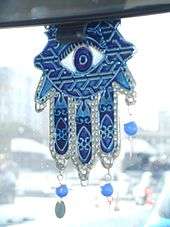
Imported by the Andalusians in the sixteenth century, jasmine has become the national flower of Tunisia.[53] The gathering takes place at dawn and then, upon nightfall, when young boys collect small bouquets, and later sell them to passersby on the street or to motorists stopped at intersections.[54]
Furthermore, jasmine is the subject of a specific sign language. A man who wears jasmine on his left ear indicates that he is single and in addition, offering white jasmine is seen as a proof of love while on the contrary, offering odorless winter jasmine is a sign of insolence.[55]
Hamsa
The hamsa (Tunisian Arabic: خمسة, also romanized khamsa), is a palm-shaped amulet popular in Tunisia and more generally in the Maghreb and commonly used in jewelry and wall hangings.[56][57] Depicting the open right hand, an image recognized and used as a sign of protection in many times throughout history, the hamsa is believed to provide defense against the evil eye. It has been theorized that its origins lie in Carthage (modern-day Tunisia) and may have been associated with the Goddess Tanit.[58]
Sign of Tanit
The sign of Tanit is an anthropomorph symbol present on many archaeological remains of the Punic Civilization.[59] Both the symbol and the name of the goddess Tanit, are still frequently used within Tunisian culture such as with the tradition of Omek Tannou[60] or the grand film prize of the Tanit d'or.[61] Some scholars also relate the name of the capital Tunis and by extension the one of the modern country and its people to the Phoenician goddess Tanith ('Tanit or Tanut), as many ancient cities were named after patron deities.[62][63]
Language
Tunisian people are homogeneous in terms of language,[64] since nearly all of them speak Tunisian as their mother-tongue in addition to mastering French and/or Arabic. The Tunisian language is built upon a significant Berber, Latin (African Romance)[65][66] and Neo-Punic[67][68] substratum, while its vocabulary is mostly derived from a morphological corruption of Arabic, French, Turkish, Italian and the languages of Spain.[69] Multilingualism within Tunisia and in the Tunisian diaspora makes it common for Tunisians to code-switch, mixing Tunisian with French, English or other languages in daily speech.[70]
Moreover, Tunisian is closely related to the Maltese language,[71] that descended from Tunisian and Siculo-Arabic.[72][73]
Gastronomy
Tunisian cuisine is a blend of Mediterranean cuisine and traditions. Its distinctive spicy fieriness comes from neighbouring Mediterranean countries and the many civilizations who have ruled Tunisian land: Romans, Vandals, Byzantines, Arabs, Spanish, Turkish, Italians (Sicilians), French, and the native Punics-Berber people. Tunisian food uses a variety of ingredients and in different ways. The main dish that is served in Tunisia is Couscous, made of minuscule grains that are cooked and usually served with meat and vegetables. In cooking they also use a variety of flavors such as: olive oil, aniseed, coriander, cumin, caraway, cinnamon, saffron, mint, orange, blossom, and rose water.
Like all Mediterranean cultures, Tunisian culture offers a "sun cuisine", based mainly on olive oil, spices, tomatoes, seafood (a wide range of fish) and meat from rearing (lamb).
Architecture
Tunisian architecture is traditionally expressed in various facets in Tunisia through Roman architecture and Islamic architecture. Through many buildings, Kairouan forms the epicenter of an architectural movement expressing the relationship between buildings and spirituality with the ornamental decoration of religious buildings in the holy city. In Djerba, the architecture such as the fortress of Kef reflects the military and spiritual destiny of a Sufi influence in the region.

The influential role of the various dynasties that ruled the country, particularly in building cities and princes of Raqqada Mahdia, illuminates the role of the geopolitical context in the architectural history of the country. Thus, many original fortresses that protected the coast from Byzantine invasions evolved into cities, like Monastir, Sousse or Lamta.
The medina of Tunis, is World Heritage Site of UNESCO, and is a typical example of Islamic architecture. However, in the areas between the ports of Bizerte and Ghar El Melh, settlements founded by the Moors fleeing Andalusia were reconquered by Catholic sovereigns and has more of a Christian influence.

Given the cosmopolitan nature of cities in Tunisia, they have retained a diversity and juxtaposition of styles. Many buildings were designed by many different architects, artisans and entrepreneurs during the French protectorate. Among the most famous architects of that time were Victor Valensi, Guy Raphael, Henri Saladin, Joss Ellenon and Jean-Emile Resplandy.[74] Five distinct architectural and decorative styles are particularly popular: those of the eclectic style (neo-classical, baroque, etc..) Between 1881 and 1900 and then again until 1920 the style was neo-Mauresque, between 1925 and 1940 it was in the Art Deco style and then the modernist style between 1943 and 1947.[74]
Music
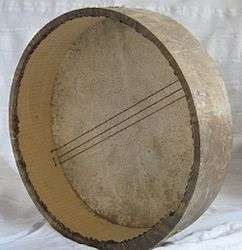
According to Mohammed Abdel Wahab, Tunisian music has been influenced by old Andalusian songs injected with Turkish, Persian and Greek influences. Of major note in Tunisian classical music is the Malouf. Deriving from the reign of the Aghlabids in the 15th century, it is a particular type of Andalusian music. In urban areas it uses stringed instruments (fiddle, oud and Kanun) and percussion (darbuka) while in rural areas, it may also be accompanied by instruments like the mezoued, gasba and the zurna.[75]
The emergence of new patterns of racial and improvised music since the late 1990s changed the musical landscape of Tunisia. At the same time, the majority of the population is attracted by the music of Levantine origin (Egyptian, Lebanese or Syrian). Popular western music has also had major success with the emergence of many groups and festivals, including rock music, hip hop, reggae and jazz.
Among the major Tunisian contemporary artists include Hedi Habbouba, Saber Rebaï, Dhafer Youssef, Belgacem Bouguenna, Sonia M'barek and Latifa. Other notable musicians include Salah El Mahdi, Anouar Brahem, Zied Gharsa and Lotfi Bouchnak.
Cinema
Tunisian cinema is today recognized as one of the most liberal, most inventive (and one of the most prize-winning) cinemas of Africa and the Middle-east. Since the 90s, Tunisia became an attractive place for filming and numerous companies emerged, serving the foreign film industry and became successful.[76] Tunisia also hosts the Carthage Film Festival which has been taking place since 1966. The festival gives priority to films from African and Middle-eastern countries. It is the oldest film festival on the African continent.[77]
Theatre
In over a century of existence, Tunisian theatre hosted or gave birth to big names, such as Sarah Bernhardt, Pauline Carton, Gérard Philipe and Jean Marais to mention a few.[78] On November 7, 1962, Habib Bourguiba, whose brother is a playwright, devoted his speech to this art,[79] which he considers "a powerful means of disseminating culture and a most effective means of popular education".[80] From this date, November 7 is regarded as the Tunisian National Day of drama.[81]
Dance
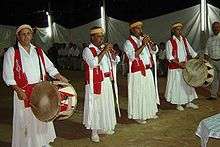
The variety of dances performed by the Tunisians probably reflects the migration flows that have traversed the country throughout the centuries. Thus, the early Phoenicians brought with them their songs and dances, whose traces are rooted in the region of Tunis, while the Romans have left few traces of art in relation to their architectural contribution.[82] Religious dances were influenced by Sufism but by the end of the 15th century, had progressively become Andalusian with their dances and urban music.
Oriental dance would arrive later with the Ottomans, although some experts in the history of Northwest African art have said it was brought to Tunisia by the first Turkish corsairs in the sixteenth century while others say that the origin of this dance goes back further to the era of matriarchy in Mesopotamia and founded by the early Phoenicians.[83] This form of oriental dance usually performed in Tunisia insists on the movements of the pelvis in rhythm, movement highlighted by the elevation of the arms to horizontal, and feet moving in rhythm and transferring weight onto the right leg or left.[84]
The Nuba, more rooted in popular practice, is linked to the dancers and the Kerkennah Djerba to a lesser extent.[85] Some experts say that their dress is of Greek origin. Structured into several scenes, the dance is often accompanied by acrobatic games with jars filled with water.[85]
Literature
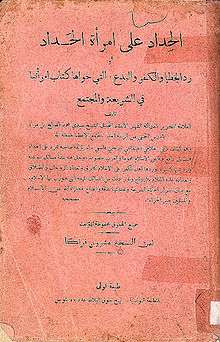
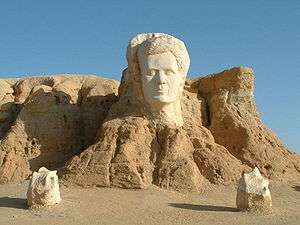
Among the Tunisian literary figures include Douagi Ali, who has produced more than 150 radio stories, over 500 poems and folk songs and nearly 15 plays,[86] Khraief Bashir[86] and others such as Moncef Ghachem, Mohamed Salah Ben Mrad or Mahmoud Messaadi. As for poetry, Tunisian poetry typically opts for nonconformity and innovation with poets such as Aboul-Qacem Echebbi. As for literature, it is characterized by its critical approach. Contrary to the pessimism of Albert Memmi, who predicted that Tunisian literature was sentenced to die young,[87] a high number of Tunisian writers are abroad including Abdelwahab Meddeb, Bakri Tahar, Mustapha Tlili, Hele Beji or Mellah Fawzi. The themes of wandering, exile and heartbreak are the focus of their creative writing.
The national bibliography lists 1249 non-school books published in 2002 in Tunisia.[88] In 2006 this figure had increased to 1,500 and 1,700 in 2007.[89] Nearly a third of the books are published for children.
Tunisian Diaspora
Statistics of the Office of Tunisians Abroad show more than 128,000 Tunisian families in Europe with a concentration in France and Germany. Young Tunisians (less than 16 years of age) represent 25% of the Tunisian community abroad.[90] Thus there is currently a rejuvenation of the Tunisian diaspora which is now in its third generation. Women represent nearly 26% of the total community.[90] In France, their percentage is estimated at 38.2%. The portion of the diaspora who are over 60 years old is around 7%.
Originally, the largest part of the Tunisians in Europe worked in sectors requiring minimal qualifications. In effect the migrants of the 1960s and 70s were less educated (mostly farmers or manual labourers).[91]
Subsequently, the majority of Tunisians settled in France have worked in the service sector (hotels, restaurants or retail) or have headed small businesses. In 2008, Tunisia became the first of the Maghreb countries to sign a management agreement concerning the flow of migrants, at the impetus of President Nicolas Sarkozy: it provides easy access for almost 9,000 Tunisian students enrolled in French institutions,[91] but also almost 500 titres de séjour (residency permits) for highly qualified individuals so that they can acquire experience in France, valid for a maximum of six years.[91] In the Arab World the Tunisian population is mostly made up of very highly qualified individuals while labourers and other unskilled individuals form the majority in Asian countries like India, Pakistan, and Afghanistan.
Notable people of Tunisian descent
Salah Mejri (United States), Max Azria (United States), M. Salah Baouendi (United States), Poorna Jagannathan (United States), Mustapha Tlili (United States), Ferrid Kheder (United States), Oussama Mellouli (United States), Leila Ben Youssef (United States), K2rhym (United States), Bushido (rapper) (Germany), Loco Dice (Germany), Sami Allagui (Germany), Änis Ben-Hatira (Germany), Mounir Chaftar (Germany), Sofian Chahed (Germany), Nejmeddin Daghfous (Germany), Rani Khedira (Germany), Sami Khedira (Germany), Ayman (Germany), Elyas M'Barek (Germany), Adel Tawil (Germany), Amel Karboul (Germany), Michel Boujenah (France), Azzedine Alaïa (France), Tarak Ben Ammar (France), Lââm (France), Nolwenn Leroy (France), Nidhal Saadi (France), Samia Orosemane (France), Yoann Touzghar (France), Aïda Touihri (France), Isleym (France), Hatem Ben Arfa (France), Sadek (France), Tunisiano (France), Afef Jnifen (Italy), Sana Hassainia (Canada), Nabila Ben Youssef (Canada), Hinda Hicks (England), Yusra Ghannouchi (England), Mohamed Hechmi Hamdi (England), Hend Sabry (Egypt), Ghassan bin Jiddo (Lebanon),
Links with Tunisia
In Tunisia, free courses of instruction in Tunisian Arabic are organised during the summer holidays for the children of Tunisian residents abroad, who are heavily influenced by the culture of the countries in which they live. Trips are also organised for them to experience Tunisian culture, history and civilisation.
References
- ↑ "National Institute of Statistics-Tunisia". National Institute of Statistics-Tunisia. 12 September 2016.
- 1 2 3 4 5 6 7 8 9 10 11 12 13 14 15 16 Communauté tunisienne à l'étranger (Office des Tunisiens à l'étranger)
- ↑ "Statistical Abstract of Israel 2009 - No. 60 Subject 2 - Table NO.24". Israeli government. Retrieved 18 February 2018.
- ↑ Population résidante permanente étrangère selon la nationalité (Office fédéral de la statistique)
- ↑ Arabic, Tunisian Spoken. Ethnologue (19 February 1999). Retrieved on 5 September 2015.
- ↑ "Tamazight language". Encyclopædia Britannica.
- ↑ "Nawaat – Interview avec l' Association Tunisienne de Culture Amazighe". Nawaat.
- ↑ "An outline of the Shilha (Berber) vernacular of Douiret (Southern Tunisia)".
- ↑ "Tunisian Amazigh and the Fight for Recognition – Tunisialive". Tunisialive. Archived from the original on 2011-10-18.
- ↑ Believers in Christ from a Muslim Background: A Global Census
- ↑ The muslim conquest and settlement of North Africa and Spain, Abdulwahid Thanun Taha, Routledge Library Edition: Muslim Spain p21
- ↑ (in French) Article « Ifriqiya » (Larousse.fr).
- ↑ Moscati, Sabatino (2001). The Phoenicians. I.B.Tauris. ISBN 978-1-85043-533-4.
- ↑ Aubet, M. E. (2001). The Phoenicians and the West: politics, colonies and trade. Cambridge University Press.
- 1 2 Jongeling, K., & Kerr, R.M. (2005). Late Punic epigraphy: an introduction to the study of Neo-Punic and Latino- Punic inscriptions. Tübingen: Mohr Siebeck, pp. 114, ISBN 3-16-148728-1.
- ↑ Appian of Alexandria (162). The Punic Wars. Roman History
- ↑ Appian of Alexandria (162). "The Third Punic War. Roman History"
- ↑ Holt, P. M., Lambton, A. K., & Lewis, B. (1977). The Cambridge History of Islam (Vol. 2). Cambridge University Press.
- ↑ Chejne, A. G. (1969). The Arabic language: Its role in history. U of Minnesota Press.
- ↑ All the Arabic sources can be found in Michele Amari, Biblioteca arabo-sicula (Rome and Turin: 1880).
- ↑ Abulafia, "The Norman Kingdom of Africa", 26.
- ↑ Lynn White, Jr.: "The Byzantinization of Sicily", The American Historical Review, Vol. 42, No. 1 (1936), pp. 1–21
- ↑ Carr, Matthew (2009). Blood and faith: the purging of Muslim Spain. The New Press. p. 290. ISBN 1-59558-361-0.
- ↑ (in French) Quitout, M. (2002). Parlons l'arabe tunisien: langue & culture. Editions L'Harmattan.
- ↑ Sayahi, L (2011). "Introduction. Current perspectives on Tunisian sociolinguistics". International Journal of the Sociology of Language. 2011 (211): 1–8. doi:10.1515/ijsl.2011.035.
- ↑ John P. Entelis, "Tunisia" pp. 532–533 in The Americana Annual 1988 (New York: Grolier). Ben Ali's background was said to be pro-Western, trained in military affairs by France and the U.S.A.; he had previously clamped down on both left and right opponents, especially Islamic fundamentalists. Entelis (1987) pp. 532–533.
- ↑ "A Snapshot of Corruption in Tunisia". Business Anti-Corruption Portal. Retrieved 7 February 2014.
- ↑ Spencer, Richard (13 January 2011). "Tunisia riots: Reform or be overthrown, US tells Arab states amid fresh riots". The Daily Telegraph. London. Retrieved 14 January 2011.
- ↑ Ryan, Yasmine. "Tunisia's bitter cyberwar". Al Jazeera. Retrieved 14 January 2011.
- ↑ Tunisia opposition fear Ennahda power grab, Ahram Online, 17 January 2012, retrieved 10 January 2014
- ↑ Tunisian politicians struggle to deliver, Al Jazeera English, 23 October 2012, retrieved 10 January 2014
- ↑ "Thousands protest before Tunisia crisis talks". Reuters. 23 October 2013.
- ↑ "Tunisia assembly passes new constitution". BBC. January 27, 2014.
- ↑ "Tunisie : les législatives fixées au 26 octobre et la présidentielle au 23 novembre". Jeune Afrique. 25 June 2014.
- ↑ "The Nobel Peace Prize 2015 - Press Release". Nobelprize.org. Nobel Media AB 2014. Retrieved 9 October 2015.
- ↑ https://infographics.economist.com/2017/DemocracyIndex/
- ↑ Tej K. Bhatia, William C. Ritchie (2006). The Handbook of Bilingualism. John Wiley & Sons. p. 860. ISBN 0631227350. Retrieved 15 August 2017.
- ↑ "Tunisia – Land | history – geography". Encyclopedia Britannica. Retrieved 2017-07-07.
- ↑ Green, Arnold H. (1978), The Tunisian Ulama 1873–1915: Social Structure and Response to Ideological Currents, BRILL, p. 69, ISBN 90-04-05687-4
- ↑ "Q&A: The Berbers". BBC News. 12 March 2004. Retrieved 19 January 2013.
- ↑ Angus Maddison (20 September 2007). Contours of the World Economy 1–2030 AD:Essays in Macro-Economic History: Essays in Macro-Economic History. OUP Oxford. p. 214. ISBN 978-0-19-922721-1. Retrieved 26 January 2013.
- ↑ "The Jews of Tunisia". Jewish Virtual Library. Retrieved 11 July 2014.
- ↑ "Archived copy" (PDF). Archived from the original (PDF) on 2012-04-14. Retrieved 2016-05-24.
- ↑ Cruciani, Fulvio; et al. (May 2004). "Phylogeographic Analysis of Haplogroup E3b (E-M215) Y Chromosomes Reveals Multiple Migratory Events Within and Out Of Africa". The American Journal of Human Genetics. 74 (5): 1014–1022. doi:10.1086/386294. PMC 1181964. PMID 15042509. Retrieved 24 May 2016.
- ↑ The X chromosome Alu insertions as a tool for human population genetics: data from European and African human groups, Athanasiadis et al. 2007
- ↑ Tomas C, Sanchez JJ, Barbaro A, et al. (2008). "X-chromosome SNP analyses in 11 human Mediterranean populations show a high overall genetic homogeneity except in North-west Africans (Moroccans)". BMC Evol. Biol. 8: 75. doi:10.1186/1471-2148-8-75. PMC 2315647. PMID 18312628.
Tunisians did not show a significant level of differentiation with northern populations as mentioned by others
- ↑ "Mitochondrial DNA and Y-chromosome microstructure in Tunisia".
- ↑ Bekada, A; Fregel, R; Cabrera, VM; Larruga, JM; Pestano, J; et al. (2013). "Introducing the Algerian Mitochondrial DNA and Y-Chromosome Profiles into the North African Landscape". PLoS ONE. 8 (2): e56775. doi:10.1371/journal.pone.0056775. PMC 3576335. PMID 23431392.
- ↑ Saïd (1970), p. 11
- ↑ Deledalle-Rhodes, Janice (Autumn 2002). "L'iconographie du timbre-poste tunisien pendant et après la période coloniale" (in French). Protée,. Retrieved September 10, 2009.
- ↑ Smith, Whitney (2001). Flag Lore Of All Nations. Brookfield, Connecticut: Millbrook Press. p. 94. ISBN 0-7613-1753-8. OCLC 45330090.
- ↑ "Les Drapeaux d'Ottoman" (in French). Ministry of Culture and Tourism of the Republic of Turkey. Archived from the original on July 12, 2014. Retrieved September 10, 2009.
- ↑ Auzias, Dominique; Boschero, Laurent; Richemont, Blanche de et Calonne, Christiane (2008). Le Petit Futé Tunisie. 2007–2008 (in French). éd. Le Petit Futé, Paris. p. 13.
- ↑ "La Tunisie de A à Z, Jasmin" (in French). Saisons tunisiennes'. Archived from the original on October 20, 2009. Retrieved September 10, 2009.
- ↑ "Jasmin d'hiver" (in French). Au jardin. Retrieved September 10, 2009.
- ↑ Bernasek et al., 2008, p. 12.
- ↑ Sonbol, 2005, pp. 355–359.
- ↑ Cuthbert, Roland (2015). The Esoteric Codex: Amulets and Talismans. Raleigh, NC: Lulu.com. p. 49. ISBN 978-1-329-50204-8.
- ↑ Edward Lipinski [sous la dir. de], Dictionnaire de la civilisation phénicienne et punique, éd. Brepols, Turnhout, 1992
- ↑ Rezgui, Sadok (1989). Les chants tunisiens. Maison tunisienne de l'édition, Tunis.
- ↑ IMDb, awards
- ↑ Room, Adrian (2006). Placenames of the World: Origins and Meanings of the Names for 6,600 Countries, Cities, Territories, Natural Features, and Historic Sites. McFarland. p. 385. ISBN 0-7864-2248-3.
- ↑ Taylor, Isaac (2008). Names and Their Histories: A Handbook of Historical Geography and Topographical Nomenclature. BiblioBazaar, LLC. p. 281. ISBN 0-559-29668-1.
- ↑ "Aménagement linguistique en Tunisie" (in French). University of Laval. Archived from the original on June 2, 2009. Retrieved September 10, 2009.
- ↑ (in French) Tilmatine Mohand, Substrat et convergences: Le berbére et l'arabe nord-africain (1999), in Estudios de dialectologia norteafricana y andalusi 4, pp 99–119
- ↑ (in Spanish) Corriente, F. (1992). Árabe andalusí y lenguas romances. Fundación MAPFRE.
- ↑ Elimam, Abdou (1998). ' 'Le maghribi, langue trois fois millénaire. ELIMAM, Abdou (Éd. ANEP, Algiers 1997), Insaniyat. pp. 129–130.
- ↑ A. Leddy-Cecere, Thomas (2010). Contact, Restructuring, and Decreolization:The Case of Tunisian Arabic (PDF). Linguistic Data Consortium, Department of Asian and Middle Eastern Languages and Literatures. pp. 10–12–50–77.
- ↑ Zribi, I., Boujelbane, R., Masmoudi, A., Ellouze, M., Belguith, L., & Habash, N. (2014). A Conventional Orthography for Tunisian Arabic. In Proceedings of the Language Resources and Evaluation Conference (LREC), Reykjavik, Iceland.
- ↑ Daoud, Mohamed (2001). "The Language Situation in Tunisia". Current Issues in Language Planning. 2: 1–52. doi:10.1080/14664200108668018.
- ↑ Borg and Azzopardi-Alexander Maltese (1997:xiii) "The immediate source for the Arabic vernacular spoken in Malta was Muslim Sicily, but its ultimate origin appears to have been Tunisia. In fact, Maltese displays some areal traits typical of Maghrebi Arabic although during the past 800 years of independent evolution it has drifted apart from Tunisian Arabic".
- ↑ Borg, Albert J.; Azzopardi-Alexander, Marie (1997). Maltese. Routledge. ISBN 0-415-02243-6.
- ↑ "The Language in Tunisia, Tunisia | TourismTunisia.com". www.tourismtunisia.com. Retrieved 2017-07-31.
- 1 2 Noura Borsali, « Le mois du patrimoine. Que soit sauvegardée la richesse architecturale de nos villes », Réalités, n°1062, 4 mai 2006
- ↑ "La Tunisie de A à Z, Instruments de musique" (in French). Saisons tunisiennes. Archived from the original on November 21, 2008. Retrieved September 10, 2009.
- ↑
- ↑ Carthage Film Festival Page on IMDB
- ↑ (in French) Culture tunisienne, « Théâtre municipal de Tunis », Saisons tunisiennes Archived 2008-05-28 at the Wayback Machine.
- ↑ Yves Lacoste et Camille Lacoste-Dujardin [sous la dir. de], L’état du Maghreb, éd. La Découverte, Paris, 1991, p. 321
- ↑ Saïd (1970), p. 53
- ↑ Saïd (1970), p. 54
- ↑ Hosni (1996), p. 143
- ↑ Hosni (1996), p.144
- ↑ Bedhioufi Hafsi, « Enjeux privés et sociaux du corps », Unité et diversité. Les identités culturelles dans le jeu de la mondialisation, éd. L’Harmattan, Paris, 2002, p. 321
- 1 2 Hosni (1996), p. 150
- 1 2 (in French) Fantaisie arabe et poésie (Guide Tangka) Archived October 7, 2011, at the Wayback Machine.
- ↑ (in French) Littérature francophone (Guide Tangka) Archived October 7, 2011, at the Wayback Machine.
- ↑ (in French) Littérature tunisienne (Ministère de la Culture et de la Sauvegarde du patrimoine) Archived 2005-12-29 at the Wayback Machine.
- ↑ (in French) « 2009, l’année des rendez-vous culturels importants », Réalités, 18 novembre 2008
- 1 2 (in French) Sonia Mabrouk, « Les Tunisiens dans le monde », Jeune Afrique, 27 avril 2008, p. 71
- 1 2 3 Sonia Mabrouk, « Un diplôme pour visa », Jeune Afrique, 27 avril 2008, pp. 71–72
